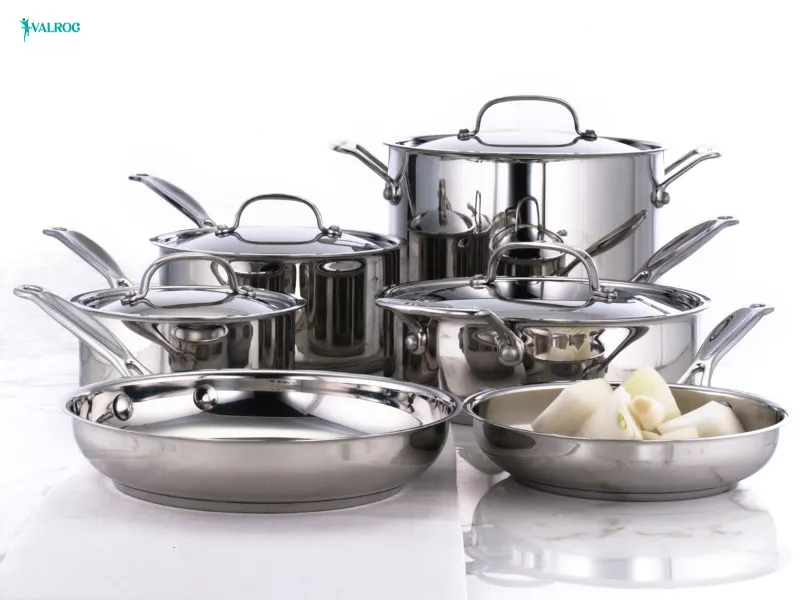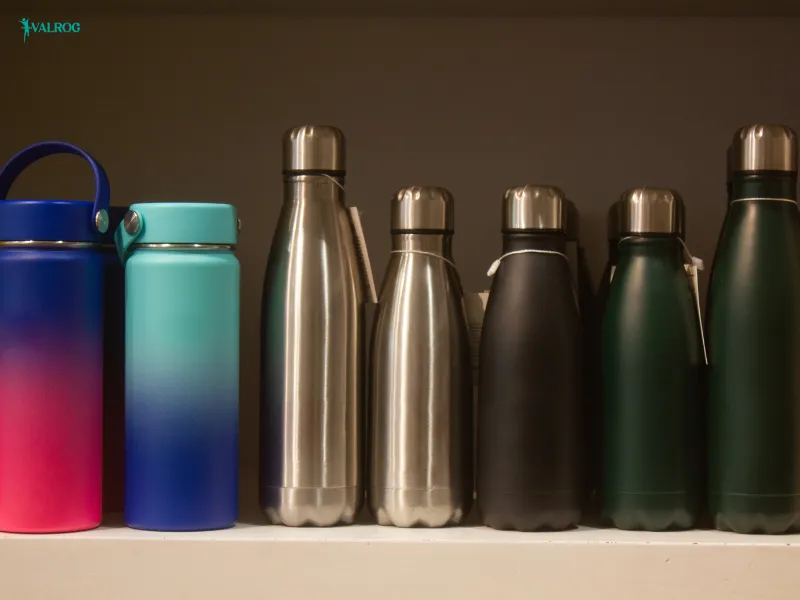Did it ever happen that you thought your aluminum pots and pans might be silently influencing your health? Aluminum being ubiquitous as it is, in our kitchens and even in our water bottles, one question continues to appear: Is aluminum cookware safe?
Aluminum is inexpensive, light, and a good conductor of heat. However, the questions of toxicity, brain health, and the release of metals into food have caused manifold confusion. Today, in this guide, we are going to answer the question: Is aluminum safe for cooking every day?
We debunk the science, usage, and precautions to be taken with aluminum, and when it may be better to make the switch.
What Is Aluminum and Why Is It in Your Kitchen
Aluminum is also the third abundant element in the Earth’s crust. It is found in cookware, foil, drink bottles, and food packages.
Low cost and the ability to conduct heat are the reasons why aluminum cookware is common. Nevertheless, the alarm bells began to toll in the 1970s when scientists discovered some aluminum in the brains of Alzheimer’s victims. That raised the question in the mind of many: Is aluminum cookware safe in the long run?
Today we know better answers, and we have fewer fears.
Discover: Is Stainless Steel Non Toxic? Full Comparison with Cast Iron
Is It Safe to Cook in Aluminum Pots According to Science?
Here we’ll talk about how aluminum leaches into food, what research says, and the real health risks vs myths.
Aluminum Leaching: The Actual Figures
Aluminum may also enter your food in small quantities when you cook in uncoated aluminum pots, particularly when you prepare acidic foods such as tomatoes or vinegar. But by how much?
In a study published in Food Chemistry, cooking tomato sauce in an uncoated aluminum pan at 180 °C released about 1.2 milligrams per 100 grams of food after 2 hours. This may seem like much; however, the World Health Organization (WHO) has established a tolerable weekly limit of 2 milligrams per kilogram of body weight.
That comes to about 136 mg/week for a 150-pound adult. Your evening meal is probably not more than 2 percent of that.
“We’re exposed to aluminum from many sources, but cookware accounts for a very small percentage,” says Dr. Jane Anderson, registered dietitian.
Health Risks: The Expert Opinion
- Alzheimer Disease: The Alzheimer’s Association reports that there is no feasible scientific data that indicates a relationship between daily exposure to aluminum and Alzheimer’s disease.
- Kidney Disease: People with weak kidneys should limit their exposure to aluminum too much, as they cannot get rid of it effectively.
- Children: Infants absorb more aluminum than adults, but the exposure regularly found in cookware is not poisonous.
Is Aluminum Cookware Safe?
Yes, aluminum cookware is safe, provided one uses it correctly and one does not have problems with most of his or her health.

Explore: Acetaminophen vs Ibuprofen: Which One Should You Choose?
Aluminum Foil, Bottles, and Pots: Are They Equal?
In this section, we’ll talk about foil versus cookware versus bottles, aluminum-coated and uncoated, and safety suggestions on a daily basis.
Aluminum Cookware
Aluminum pots without coating are reactive. They are able to influence the taste and amount of metal in acidic food. That is where anodized aluminum enters the picture.
Anodized aluminum cookware is a cookware whose surface is hardened through electrochemical treatment. This makes it non-reactive and much less prone to leach aluminum.
Then, is anodized aluminum cookware safe? Yes. Anodized aluminum is food-safe and is said to be durable.
Quick Tip:
Avoid using metal utensils, which scratch the coating. When your pot or pan is spoiled, change it.

Aluminum Foil
Aluminum foil has many wrapping, grilling, and baking uses. Leaching is, however, increased with high heat and acidic foods according to studies.
- Do not cover acidic food with foil.
- Do not attempt to bake longer than 400 degrees F in foil.
Is aluminum food safe? In most cases, the answer is yes; however, it should be in moderation and responsibly.
Aluminum Bottles
A protective lining, most often of BPA-free plastic or epoxy, coats aluminum water bottles.
In case the lining is scratched or dented:
- Quit the bottle.
- Select approved BPA-free and food-safe substitutes.

Learn More: Cough and Headache and Fever: How to Tell If It’s Cold, Flu, or COVID-19
Practical Tips: How to Use Aluminum Cookware Safely
Still wondering, is aluminum safe to cook with? Here is what you can do to minimize the aluminium cooking pots danger:
- Take care by using anodized or coated aluminum cookware to minimize leaching.
- Do not cook acidic food (such as tomatoes or citrus) in bare aluminum.
- Discard pots and pans that are worn out and corroded, or have deep scratches on them.
- Aluminum containers should not be used to store food for a long time.
- Other cookware options- stainless steel, cast iron, or ceramic.
These are tips to make sure that the aluminum pots and pans safety remains high in your kitchen.
What Government and Research Say
- WHO: Establishes safe weekly doses of aluminum.
- FDA: Permits aluminum to be used in food contact surfaces, but with particular safety guidelines.
- EFSA (Europe): Also regards low level exposure to aluminum as being safe in healthy adults.
- Harvard Health: Adds that an occasional use of aluminum cookware carries a minimal or no health risk.
Real-Life Example: Emma’s Kitchen
Emma liked the old aluminum pot of her grandma until she saw that the pot had a worn surface. Having known that aluminum pots are only safe when unworn or coated, she changed to anodized cookware.
She now enjoys the same quality of cooking with peace of mind.
Final Thoughts
Is aluminum cookware safe in your kitchen? The response is yes–with caution. Choose anodized or coated options, avoid acidic foods in uncoated pots, and discard damaged cookware.
Healthy adults have an insignificant exposure to aluminum through cookware. What you get when you have smart habits is all the benefits without the worry.
The main thing is to remember that it is better not to panic—it is better to cook smart.
